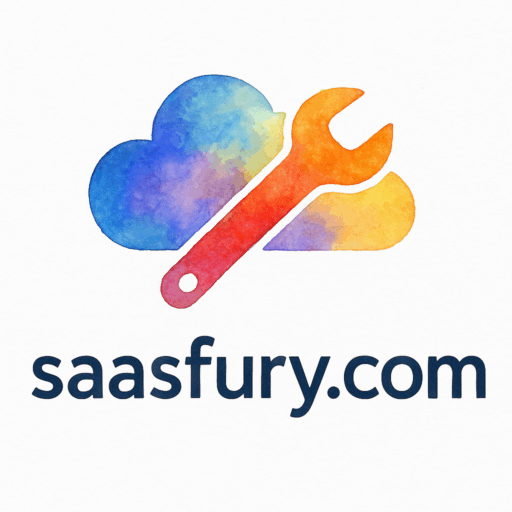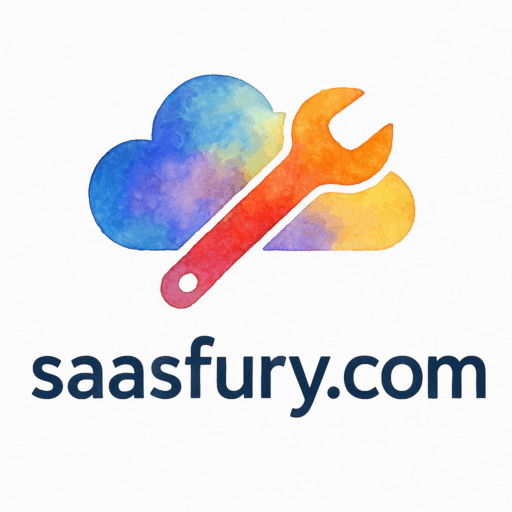Introduction to Omnichannel Retail
Omnichannel retail is no longer just a buzzword—it’s the future of shopping. Customers want the flexibility to browse on social media, add items to a cart on an e-commerce site, and pick up in-store without missing a beat. To achieve this kind of fluid experience, retailers need the right SaaS tools that streamline processes, unify data, and boost customer satisfaction.
Platforms like SaaS Fury highlight just how powerful the right software can be in transforming industries like retail and e-commerce, healthcare, and even hospitality.
Why SaaS Tools Are Crucial for Retailers
The Shift from Traditional to Omnichannel
Traditional retail focused on a single touchpoint—like a store or catalog. Omnichannel retail combines physical stores, e-commerce, and digital marketing into one seamless journey. According to insights from SaaS tools for retail, businesses that adopt SaaS integrations can bridge gaps between online and offline sales effortlessly.
The Role of SaaS in Customer Experience
Customer expectations are sky-high. They expect personalized offers, real-time updates, and smooth service. SaaS platforms—like customer relationship management (CRM) and marketing automation tools—are the backbone of this improved experience.

Key Benefits of Using SaaS in Retail
Scalability and Flexibility
With SaaS, retailers don’t need huge infrastructure investments. A subscription model lets you expand as your business grows—ideal for small businesses testing omnichannel strategies (learn more about small business SaaS).
Cost-Effectiveness
Instead of hefty upfront software costs, SaaS spreads expenses into predictable monthly subscriptions. This makes even enterprise-grade tools accessible to startups.
Seamless Integration Across Platforms
From POS systems to e-commerce tools, SaaS allows smooth integration. That’s essential in omnichannel retail where platforms like online education SaaS or marketing agencies tools show how industries leverage integrations for success.
6 SaaS Tool Recommendations for Omnichannel Retail Success
1. Customer Relationship Management (CRM) Tools
How CRMs Improve Customer Retention
A CRM system centralizes customer data from multiple touchpoints—social media, e-commerce platforms, and in-store visits. This helps retailers personalize campaigns and build stronger relationships.
Best SaaS CRM Options for Retail
Top players like Salesforce Commerce Cloud, Zoho, and HubSpot integrate well with retail. If you’re exploring business tools for consulting or professional services, CRM recommendations here will also give insights.
2. Inventory Management Software
Real-Time Tracking Across Channels
Imagine promising a customer an item online, only to find it’s out of stock in-store. Inventory SaaS eliminates that headache with real-time tracking across platforms.
Recommended Inventory SaaS Tools
Platforms like TradeGecko, Cin7, and NetSuite shine here. These align with retail-focused SaaS tools that help synchronize stock across warehouses and sales channels.
3. Point-of-Sale (POS) Systems
Bridging Online and Offline Sales
Today’s POS systems are more than registers—they’re unified platforms for sales, loyalty, and inventory.
Leading SaaS POS Solutions
Solutions like Shopify POS and Lightspeed are great for omnichannel setups. For those in hospitality and food service, SaaS-based POS hospitality tools also integrate customer orders, reservations, and payments seamlessly.
4. Marketing Automation Platforms
Personalized Campaigns Made Simple
SaaS marketing tools let retailers send personalized offers via email, SMS, and social ads. That consistency builds trust across channels.
Popular SaaS Marketing Tools
Klaviyo, Mailchimp, and ActiveCampaign dominate the space. Agencies and retailers alike rely on creative SaaS tools and e-commerce marketing software to power campaigns.
5. Analytics and Business Intelligence Software
Data-Driven Decisions for Growth
Retailers can’t just rely on gut instinct. Analytics SaaS tools uncover customer trends, shopping habits, and revenue drivers.
Top SaaS Analytics Platforms
Google Analytics 4, Tableau, and Power BI lead the way. You’ll find similar insights used across industries, including healthcare SaaS tools that use analytics for patient care optimization.
6. Customer Support and Helpdesk Tools
Enhancing Customer Satisfaction
Support is part of the shopping experience. SaaS helpdesks manage chat, email, and phone support from one dashboard.
Trusted SaaS Support Platforms
Zendesk, Freshdesk, and Intercom are popular picks. If you’re in hospitality, you’ll find customer service powered by hotel SaaS tools just as crucial.
How to Choose the Right SaaS Tools for Your Business
Define Your Business Goals
Start by identifying your objectives—do you want better retention, improved inventory, or more personalized marketing?
Consider Integration and Scalability
Your SaaS stack must work together. Look at omnichannel-ready solutions (omnichannel SaaS recommendations) to avoid data silos.
Focus on Ease of Use and Support
Even the best tool fails if your team can’t use it. Choose SaaS providers with strong support and easy onboarding.
Common Challenges in Omnichannel SaaS Implementation
Data Synchronization Issues
Outdated inventory or pricing erodes trust. Retailers must prioritize SaaS tools with real-time sync features.
Employee Training and Adoption
Staff buy-in is critical. Some companies use creative education SaaS to train employees more effectively.
Cost Management Concerns
Multiple subscriptions add up. Conduct regular audits of your SaaS stack to trim unused tools.
Future Trends in SaaS for Omnichannel Retail
AI-Powered Retail Solutions
AI-driven personalization, chatbots, and predictive analytics are redefining omnichannel experiences.
Hyper-Personalization
From personalized discounts to predictive product recommendations, SaaS will continue pushing individualized shopping journeys.
Cloud-Native Innovations
Next-gen SaaS tool recommendations will be more agile, secure, and globally scalable.
Conclusion
Omnichannel retail isn’t optional—it’s essential. SaaS tools like CRMs, inventory systems, POS, and marketing automation empower retailers to meet customer expectations across every channel. With the right stack, you can turn fragmented systems into a unified shopping experience that drives loyalty and growth.
FAQs
1. What’s the best SaaS tool for small retailers starting omnichannel?
Shopify POS paired with Klaviyo is an affordable, effective starting point for small businesses.
2. How do SaaS tools enhance retail customer experience?
They centralize data, personalize marketing, and streamline support.
3. Can SaaS inventory tools stop overstocking issues?
Yes—tools like Cin7 forecast demand and optimize stock across channels.
4. Are SaaS platforms cost-effective for startups?
Absolutely—subscription pricing makes advanced tools affordable.
5. Which SaaS tool is best for omnichannel marketing?
Klaviyo and ActiveCampaign, both recommended by e-commerce SaaS experts.
6. How can retailers ensure SaaS tools integrate well?
Choose platforms with open APIs and strong omnichannel compatibility.
7. What’s the next big SaaS trend in retail?
AI-driven personalization and predictive analytics will dominate omnichannel retail strategies.

